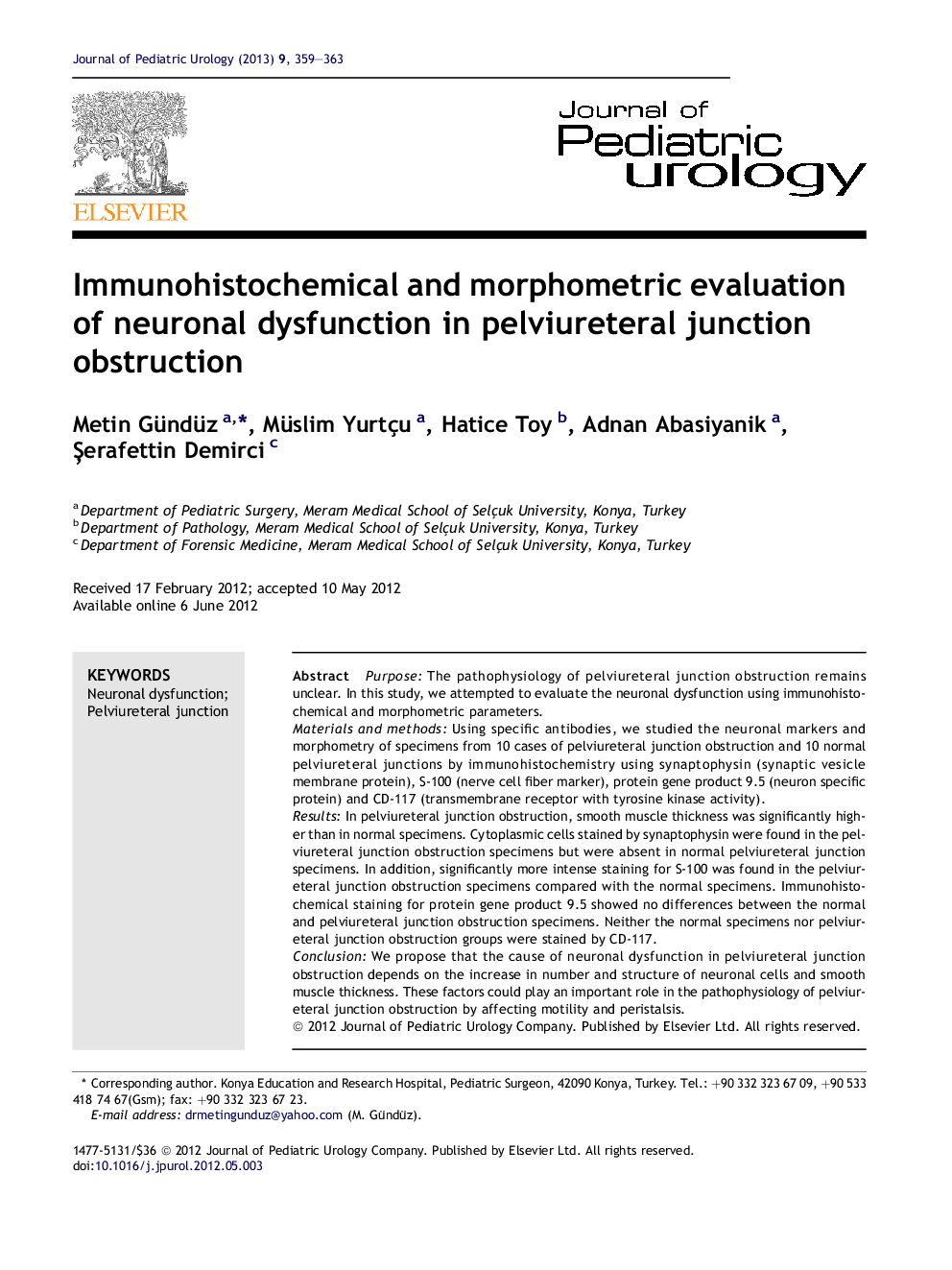| Article ID | Journal | Published Year | Pages | File Type |
|---|---|---|---|---|
| 4162695 | Journal of Pediatric Urology | 2013 | 5 Pages |
PurposeThe pathophysiology of pelviureteral junction obstruction remains unclear. In this study, we attempted to evaluate the neuronal dysfunction using immunohistochemical and morphometric parameters.Materials and methodsUsing specific antibodies, we studied the neuronal markers and morphometry of specimens from 10 cases of pelviureteral junction obstruction and 10 normal pelviureteral junctions by immunohistochemistry using synaptophysin (synaptic vesicle membrane protein), S-100 (nerve cell fiber marker), protein gene product 9.5 (neuron specific protein) and CD-117 (transmembrane receptor with tyrosine kinase activity).ResultsIn pelviureteral junction obstruction, smooth muscle thickness was significantly higher than in normal specimens. Cytoplasmic cells stained by synaptophysin were found in the pelviureteral junction obstruction specimens but were absent in normal pelviureteral junction specimens. In addition, significantly more intense staining for S-100 was found in the pelviureteral junction obstruction specimens compared with the normal specimens. Immunohistochemical staining for protein gene product 9.5 showed no differences between the normal and pelviureteral junction obstruction specimens. Neither the normal specimens nor pelviureteral junction obstruction groups were stained by CD-117.ConclusionWe propose that the cause of neuronal dysfunction in pelviureteral junction obstruction depends on the increase in number and structure of neuronal cells and smooth muscle thickness. These factors could play an important role in the pathophysiology of pelviureteral junction obstruction by affecting motility and peristalsis.
